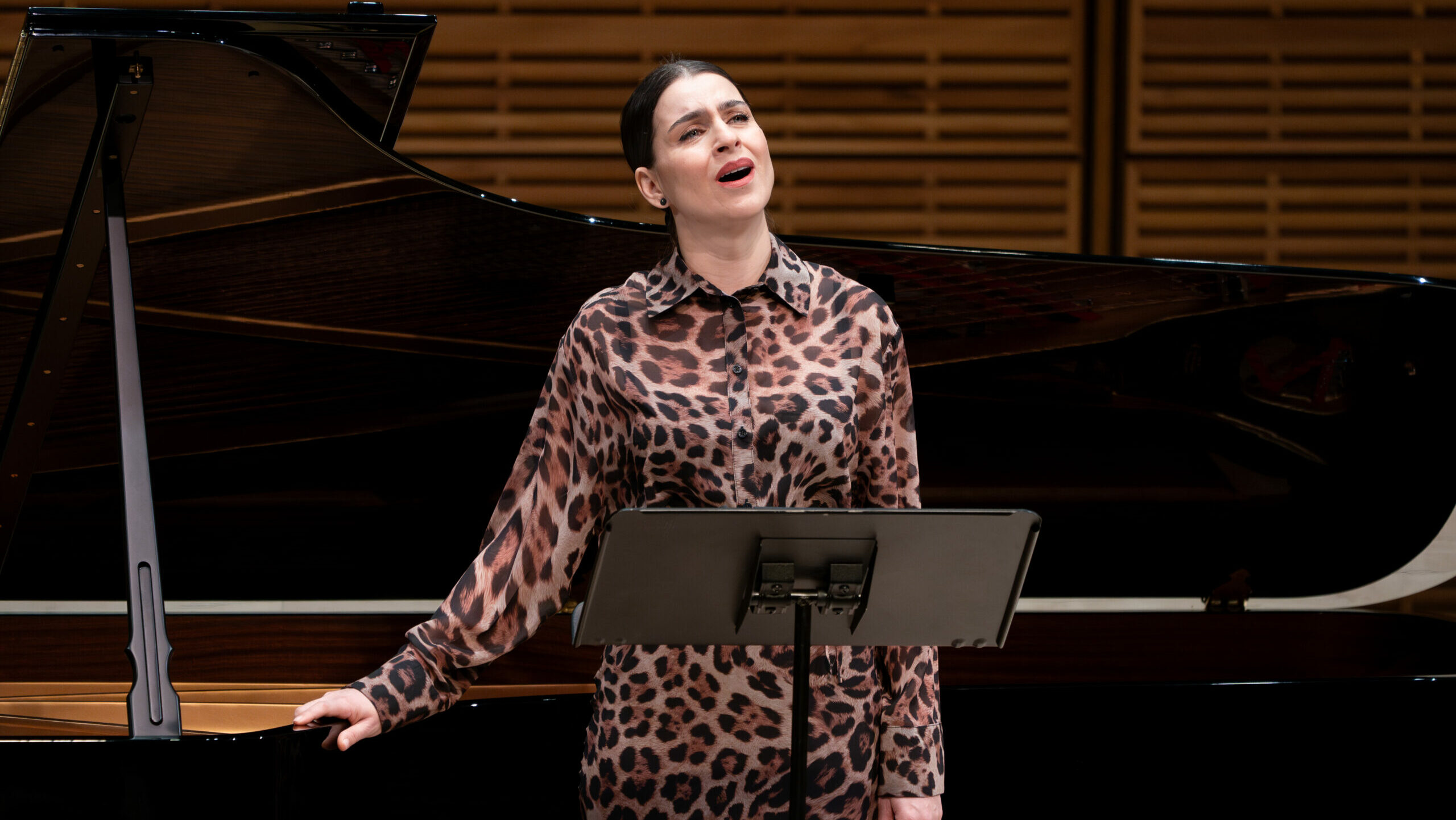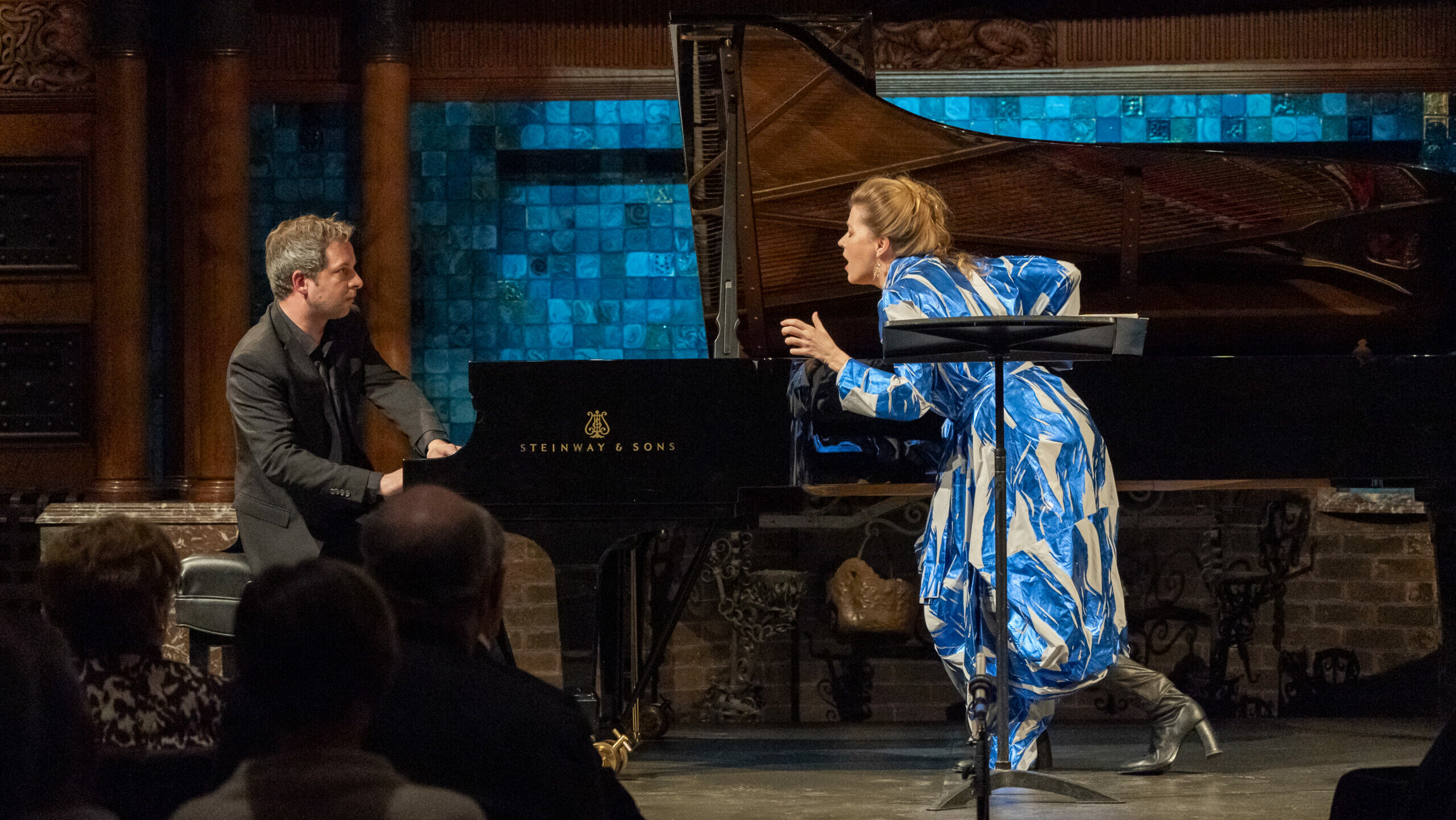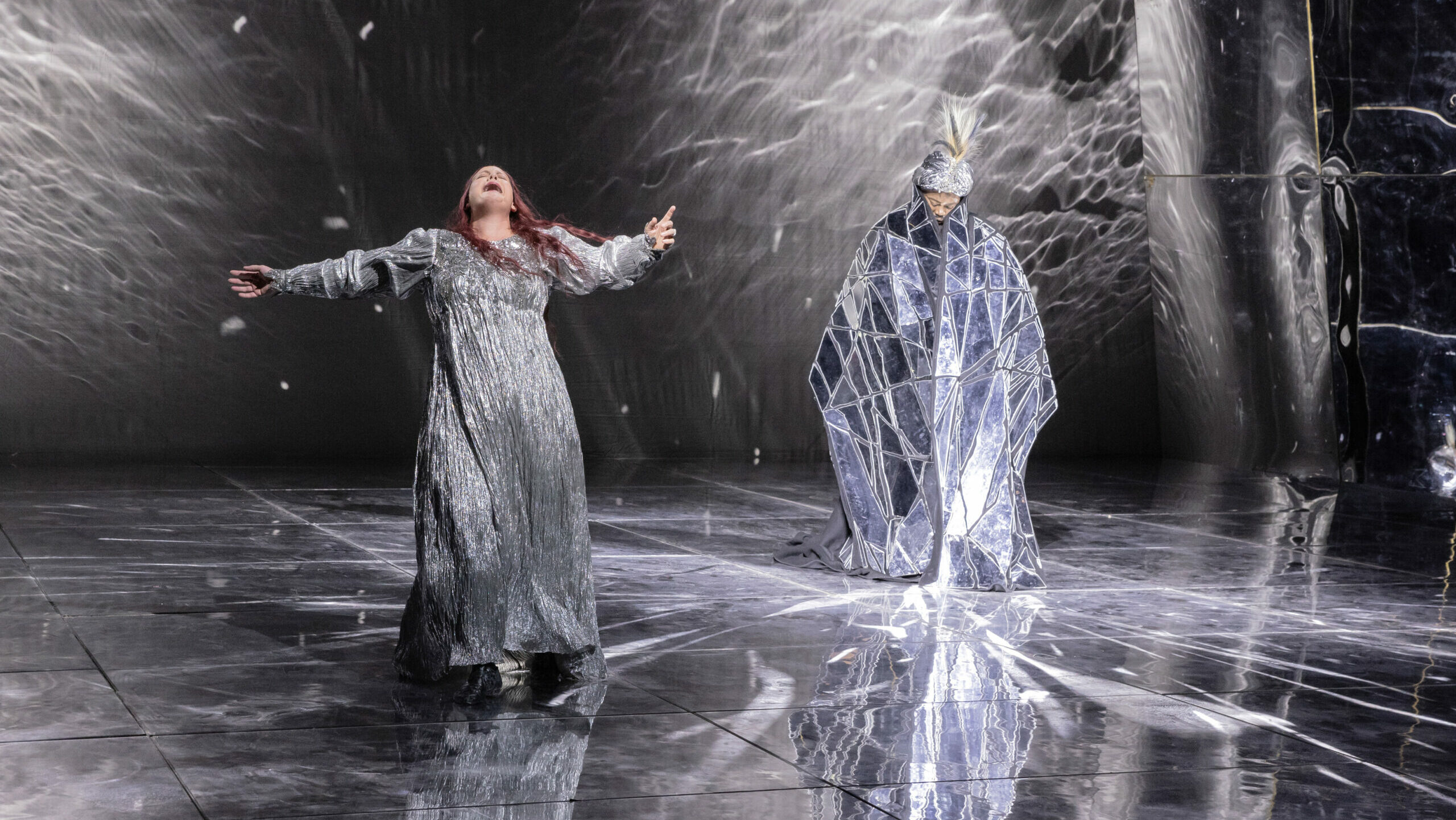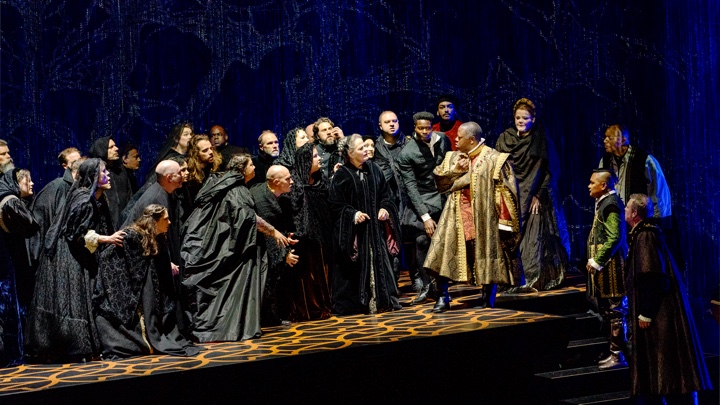

Dr. Botstein firmly believes that every work he presents ought to be in the standard repertory; sadly his public may fail to agree with him while grateful for the chance to see works that otherwise exist only in dusty scores, scholarly critical studies or sonically crude audio recordings.
In the case of this summer’s resuscitation project, Camille Saint-Saëns’ Henri VIII (1883), it was quite evident that this is a dramatically sound work with consistently well-crafted, theatrically vital and attractive music that provides at least three roles for gifted singing actors. What it lacks—and which the dramatically more episodic and static Samson et Dalila does have—are stunning hit arias and/or vocal ensembles that are performed outside the opera itself.
The one aria that is occasionally performed outside of the opera is Henry VIII’s Act I aria “Qui donc commande, quand il aime?”—here it is sung with star power by Sherrill Milnes in a 1975 recording.
Henri VIII is an opera in four acts by Camille Saint-Saëns, from a libretto by Léonce Détroyat and Armand Silvestre, based on El cisma en Inglaterra (The Schism in England) (1627) by Pedro Calderón de la Barca.
The plot concerns Henry VIII’s affair with Anne Boleyn, his divorce from his Spanish first wife Katherine of Aragon and the schism with the Catholic church when the Pope refused to give Henry the divorce that would allow him to marry Anne and sire a legitimate male heir.
Henry VIII then established himself as the head of the Church of England. (TV viewers of The Tudors, Anne of the Thousand Days, The Other Boleyn Girl, Wolf Hall and The Six Wives of Henry VIII are very familiar with this story, even if they didn’t study their English history in high school.)
Henri VIII premiered on March 5, 1883 at the Palais Garnier under the auspices of the Opéra National de Paris. The opera ends with the death of Katherine while Anne Boleyn realizes she has lost the King’s love with the headsman looming in her future.
Act I shows Anne being initially wooed by the King with the execution of the Duke of Buckingham offstage, foreshadowing her dire fate. Act IV in this production ends with Henry threatening Anne that she had better not deceive him or else while towering black silhouettes of three executioners rise up behind them.
The United States premiere was presented by the defunct Bel Canto Opera in New York City on April 27, 1974 with Jason Byce as Henry VIII, Francesca Lawton-Sherman as Queen Catherine, Katherine Basler as Anne Boleyn under the musical direction of Susan Peters. Milnes headlined an English-language production in San Diego in 1983 with Cristina Deutekom as Catherine d’Aragon, Brenda Boozer as Anne Boleyn and Jacque Trussel as Don Gómez de Faria.
A concert performance was given at the Bard College Music Festival on August 20, 2012, conducted by Dr. Leon Botstein with Ellie Dehn as Catherine (a sympathetic lyric soprano in a grand spinto role), Jason Howard as Henry VIII (vocally coarse and underpowered), and Jennifer Holloway (lovely to see and hear) as Anne Boleyn.
I saw that concert which had extensive projections, costumes and was semi-staged. I remember finding the music pleasant but unmemorable and the opera long but lacking in excitement. Two central lead roles were cast with singers who were vocally underpowered.
The current production which opened at the Fisher Center on July 21 and runs for five performances until July 30 (and which I saw this past Sunday afternoon) is a much improved affair, staged with elegance and impressive detail with compelling singing actors in the leading roles which makes a stronger argument in favor of Saint-Saëns’ opera.
Dr. Botstein on this occasion had access to music that was either cut before the premiere or revised or added for later productions. This includes expanded versions of Catherine’s and Don Gómez’s arias and a “septet” (actually an octet) that concluded the second act.
The Act II ballet was excised but the music (based on old English melodies) was performed by a string quartet in the lobby during intermission. The only section that cried out for cutting was the first scene of Act III with Cardinal Campeggio, the papal legate, which is musically and dramatically expendable.
Care was shown in the casting of every role—fine singers like tenor Aaron Blake made The Garter King of Arms’ heraldic pronouncements in Act III arresting solo moments. Kevin Thompson as Archbishop Cramner and Rodell Rosel as Surrey are also major players in minor assignments. Bass Harold Wilson was a pillar of vocal authority as the Duke of Norfolk.
Only Franco-American bass Christian Zaremba failed to carry his Act III confrontation with the King (clearly influenced by the Philippe II/Inquisitor confrontation in Verdi’s Don Carlos) due to grainy, unresonant tone though his aria ended on a solid basso-profundo low E, his best note all afternoon.
Alfred Walker as the fearsome despot Henri VIII does not have the most mellifluous or elegantly Gallic timbre. But his imposing, dominating vocal presence with abundant volume, dark menacing color and a built-in snarl made the legendary monarch properly fearsome and larger than life. (The role was composed for Jean Lassalle, one of the superstar baritones of the 19th century. Lassalle lived long enough to record songs and arias though he was past his prime but still capable.)
The late in the day casting of lyric-coloratura soprano Amanda Woodbury as Queen Catherine d’Aragon worried me. The role was created by the Austrian dramatic soprano Gabrielle Krauss who specialized in falcon repertory. However, Woodbury revealed a lush ruby-toned, richer soprano than her earlier coloratura roles (Amenaide in Tancredi, Leila in Pearl Fishers, Juliette in the Gounod opera at the Met) indicated.
The tessitura of the role is lower than her usual repertory (typical of a falcon role) yet Woodbury’s middle voice has filled out considerably and she was able to expand the tone without forcing. Only when Catherine’s high notes need to dominate ensembles did she lack vocal power.
Her Act IV solo longing for her native Spain (similar to Elisabeth de Valois pining for France in the Don Carlos Act V monologue “Tu qui sus le néant”) moved the listener with floated phases and exquisitely delicate phrasing.
Here is Veronique Gens in that passage.
The role of Don Gómez de Faria, the Spanish ambassador is a non-historical character, the former lover of Anne Boleyn whose love letter to the future Queen of England is a potentially incriminating document that falls into the hands of the banished Catherine d’Aragon.
Don Gómez is a somewhat ancillary figure whose billet doux plays a larger role in the later action than his person. Botstein cast the role from strength with the very appealing, rising young Canadian lyric tenor Josh Lovell.
A former member of the Vienna State Opera ensemble, Lovell has sung in Vienna and at Glyndebourne and has debuts scheduled at the Paris Opera and La Scala. The tone is plangent and beautifully produced with a fine-grained smooth tone and caressing timbre. His top notes are clear and unforced and his French diction (he is Canadian) was excellent.
The other major revelation of the afternoon was mezzo-contralto Lindsey Ammann as Anne Boleyn. Ammann is part of the ensemble of the Bayerische Staatsoper and has sung at the Met in Il Trittico. Petite and intense with long golden hair (the libretto specifies the historically raven-haired Boleyn is a blonde), Ammann riveted the audience with her visual and vocal intensity—using a concentrated stillness to focus the audience on Anne’s machinations born of personal ambition.
The Act II confrontation between Anne and Catherine was a real Alexis and Krystle (Dynasty) or Mary (Mrs. Stephen) Haines and Crystal Allen (in The Women) catfight and Ammann’s Anne gave no quarter to Woodbury’s queen.
Ammann’s tone has real smoldering contralto resonance which can open up to a blazing dramatic mezzo-soprano top. Her Anne was a formidable figure and a sister to Saint-Saëns other low-voiced antiheroine, Dalila. That is a role I would love to see Ms. Ammann take on—she has the mixture of non-matronly contralto seductiveness and vocal power.
Leon Botstein, as I keep repeating, is an ever improving conductor. Like Eve Queler at Opera Orchestra of New York, he was often more admired for his programming than his baton work. Botstein understood Saint-Saëns’ debts to Verdi and Berlioz balancing symphonic weight with French clarity and instrumental delicacy.
The very accomplished American Symphony Orchestra and Bard Festival Chorale (trained by James Bagwell) acquitted themselves with total authority and superb musicianship. The musical performance level was international opera house, not a regional college offering.
The staging by Jean-Romain Vesperini managed to cleverly create the illusion of ornate visual spectacle with an economy of means. The blocking was intelligent and clear with a minimum of fuss. The unit set by Bruno de Lavenère consisted of a sloping platform stage center with a circular moonlike mirror above. A metallic beaded curtain downstage provided a scrim for an ever changing series of stylized projections of 15th century exterior and interior architecture and gardens.
Like any scrim it became transparent when lit from behind allowing us to see two locations at once (lighting by Christophe Chaupin). There was also an upstage screen providing ever-shifting backgrounds. The period costumes by Alain Blanchot were elegantly detailed, precise and sumptuous in fabric and color.
The performance ran for four hours with only one intermission but it never felt long or failed to engage this listener. This really was an impressive achievement worthy of an international festival. It runs until July 30 and I encourage your attendance. The July 26 performance will stream live online at 2:00 pm EDT, with an encore presentation at 5:00 pm EDT on July 29.
Next summer in 2024, Dr. Botstein will cross another French Grand Opera off of my bucket list with a Bard Summerscape production of Meyerbeer’s Le Prophète (Bard performed Les Huguenots in 2009 with a then little-known Michael Spyres as Raoul and Erin Morley as Marguerite de Valois). I am already breathless with anticipation!
Call for submissions: parterre box‘s new Talk of the Town
parterre box is launching a new themed regular feature curated by our readers and opera fans across the world! We are asking for your favorite clips, recordings, and anecdotes to get people chatting, listening, and thinking.
parterre box is launching a new themed regular feature curated by our readers and opera fans across the world! We are asking for your favorite clips, recordings, and anecdotes to get people chatting, listening, and thinking.
-
Topics: bard summerscape, review
Latest on Parterre
Reach your audience through parterre box!
parterre box, “the most essential blog in opera” (New York Times), is now booking display and sponsored content advertising for the 2023-2024 season. Join Carnegie Hall, Lincoln Center, Warner Classics and many others in reaching your target audience through parterre box.
parterre box, “the most essential blog in opera” (New York Times), is now booking display and sponsored content advertising for the 2023-2024 season. Join Carnegie Hall, Lincoln Center, Warner Classics and many others in reaching your target audience through parterre box.
parterre in your box?
Get our free weekly newsletter delivered to your email.



























Comments